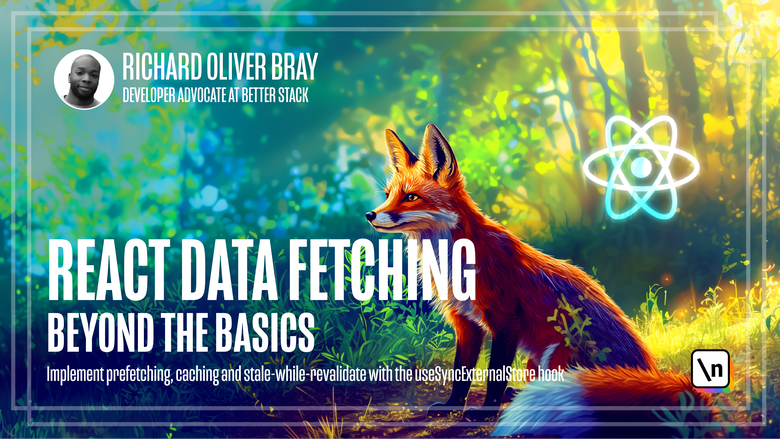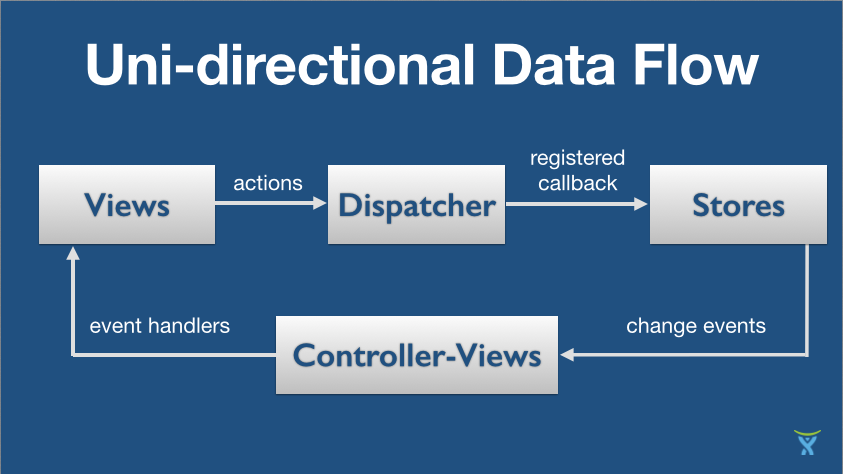In the ever-evolving landscape of web development, managing data flow between a server and a client remains a central challenge. For React applications, the community has produced a wealth of solutions, from simple fetch hooks to sophisticated caching libraries. Among these, Relay stands out as a powerful, opinionated framework designed by Meta to tackle the most demanding data-fetching requirements. While often seen as a tool for massive applications like Facebook, recent advancements and a maturing ecosystem have made Relay an increasingly compelling choice for projects of all sizes seeking scalability, performance, and type safety. This article explores the latest in Relay News, diving deep into its core philosophy, modern implementation patterns, and advanced techniques that make it a high-performance solution for today’s complex UIs.
We will dissect how Relay’s unique compiler-first approach sets it apart from contemporaries discussed in React Query News or Apollo Client News. We’ll provide practical examples for integrating it into popular frameworks covered in Next.js News and React Native News, and explore how it simplifies complex features like pagination and real-time updates. Whether you’re building a dynamic social feed, a complex dashboard with data visualization tools like Recharts News, or a robust mobile app using Expo News, understanding Relay’s declarative paradigm can fundamentally change how you build data-driven components.
The Core Philosophy of Relay: A Modern Refresher
Relay is more than just a data-fetching library; it’s a comprehensive framework built on a set of powerful principles. Its primary goal is to help developers build data-driven applications that are fast, resilient, and easy to maintain. It achieves this through a unique combination of GraphQL, a declarative API, and a powerful build-time compiler.
Declarative Data Fetching with Fragments
The cornerstone of Relay is the co-location of data dependencies with the components that use them. Instead of fetching a large, monolithic blob of data at the top of your application tree, each component declares its own data requirements using GraphQL fragments. This makes components self-contained and reusable. When you compose these components together, Relay’s compiler automatically aggregates their fragments into a single, efficient GraphQL query.
This approach eliminates over-fetching and under-fetching, ensuring each component gets precisely the data it needs. It also promotes better component architecture, as the data contract is clearly defined right beside the view logic. Contrast this with other state management solutions often discussed in Redux News or Zustand News, where data fetching and component rendering are often managed in separate layers.
// UserProfile.tsx
import React from 'react';
import { useFragment, graphql } from 'react-relay';
import type { UserProfile_user$key } from './__generated__/UserProfile_user.graphql';
const userFragment = graphql`
fragment UserProfile_user on User {
name
profilePicture(width: 100, height: 100) {
url
}
email
}
`;
type Props = {
user: UserProfile_user$key;
};
export default function UserProfile({ user }: Props) {
const data = useFragment(userFragment, user);
return (
<div>
<img src={data.profilePicture?.url} alt={data.name} />
<h3>{data.name}</h3>
<p>Email: {data.email}</p>
</div>
);
}The Relay Compiler: The Unsung Hero
What truly sets Relay apart is its compiler. Before your application ever runs, the Relay compiler analyzes all the GraphQL fragments and queries in your codebase. It performs several critical tasks:
- Query Optimization: It merges fragments, removes redundant fields, and generates optimized, concrete queries to send to your server.
- Type Generation: It automatically generates TypeScript (or Flow) types from your GraphQL schema and fragments, providing end-to-end type safety. This eliminates manual type definitions and ensures your components are always in sync with your API.
- Build-time Error Checking: The compiler validates your queries against your GraphQL schema at build time, catching errors like non-existent fields or incorrect arguments long before they reach production.
This build-time work is a significant advantage, reducing runtime overhead and improving developer confidence. It’s a key differentiator when comparing solutions in the broader data-fetching landscape, including Urql News and SWR.

Implementing Relay in a Modern Stack
Getting started with Relay has become significantly easier over the years, with better documentation and tighter integration with modern frameworks. Whether you’re working with a server-rendered application using Remix News or a mobile app with React Native News, the setup process is well-defined.
Setting Up the Relay Environment
The first step is to configure the Relay environment, which tells Relay how to send network requests to your GraphQL server and how to manage its local data cache. This is typically done in a central file and provided to your application via a React context.
// RelayEnvironment.ts
import {
Environment,
Network,
RecordSource,
Store,
FetchFunction,
} from 'relay-runtime';
const fetchQuery: FetchFunction = async (params, variables) => {
const response = await fetch('https://your-graphql-api.com/graphql', {
method: 'POST',
headers: {
'Content-Type': 'application/json',
},
body: JSON.stringify({
query: params.text,
variables,
}),
});
return await response.json();
};
function createRelayEnvironment() {
return new Environment({
network: Network.create(fetchQuery),
store: new Store(new RecordSource()),
});
}
export const RelayEnvironment = createRelayEnvironment();You then wrap your application’s root component with `RelayEnvironmentProvider` to make this environment available to all Relay hooks. This pattern is common across the React ecosystem, from state managers like Recoil News to UI libraries like NativeBase News.
Fetching Data with `useLazyLoadQuery`
For fetching the initial data for a page or a view, Relay provides the `useLazyLoadQuery` hook. This hook integrates seamlessly with React Suspense, allowing you to specify a loading state declaratively while Relay handles the data fetching in the background. This creates a smoother user experience and simplifies loading state management in your components.
// NewsfeedPage.tsx
import React, { Suspense } from 'react';
import { useLazyLoadQuery, graphql } from 'react-relay';
import { NewsfeedPageQuery } from './__generated__/NewsfeedPageQuery.graphql';
import Story from './Story';
const newsfeedQuery = graphql`
query NewsfeedPageQuery {
viewer {
newsfeed(first: 10) {
edges {
node {
id
...Story_story
}
}
}
}
}
`;
function Newsfeed() {
const data = useLazyLoadQuery<NewsfeedPageQuery>(newsfeedQuery, {});
return (
<div>
{data.viewer?.newsfeed.edges.map(edge =>
edge?.node ? <Story key={edge.node.id} story={edge.node} /> : null
)}
</div>
);
}
export default function NewsfeedPage() {
return (
<Suspense fallback={<div>Loading newsfeed...</div>}>
<Newsfeed />
</Suspense>
);
}Advanced Relay Patterns and Recent Features
Beyond basic data fetching, Relay provides powerful abstractions for handling complex UI patterns. These features are highly optimized and can save developers from writing hundreds of lines of boilerplate code, a common pain point when managing forms with React Hook Form News or complex navigation with React Navigation News.
Effortless Pagination with `usePaginationFragment`
Infinite scroll and pagination are ubiquitous in modern applications. Relay offers a first-class solution with the `@connection` directive and the `usePaginationFragment` hook. By annotating a field in your fragment with `@connection`, you tell Relay that this is a paginated list. The hook then provides you with `data`, `hasNext`, `loadNext`, and `isLoadingNext` properties, abstracting away the complex logic of fetching subsequent pages and merging the results into the local store.

// PaginatedComments.tsx
import React from 'react';
import { usePaginationFragment, graphql } from 'react-relay';
import { PaginatedComments_post$key } from './__generated__/PaginatedComments_post.graphql';
import Comment from './Comment';
const commentsFragment = graphql`
fragment PaginatedComments_post on Post
@refetchable(queryName: "PaginatedCommentsPaginationQuery")
@argumentDefinitions(
count: { type: "Int", defaultValue: 5 }
cursor: { type: "String" }
) {
comments(first: $count, after: $cursor)
@connection(key: "PaginatedComments_post_comments") {
edges {
node {
id
...Comment_comment
}
}
}
}
`;
export default function PaginatedComments(props: { post: PaginatedComments_post$key }) {
const { data, loadNext, hasNext, isLoadingNext } = usePaginationFragment(
commentsFragment,
props.post
);
return (
<div>
{data.comments.edges.map(edge =>
edge?.node ? <Comment key={edge.node.id} comment={edge.node} /> : null
)}
{hasNext && (
<button onClick={() => loadNext(5)} disabled={isLoadingNext}>
{isLoadingNext ? 'Loading...' : 'Load More Comments'}
</button>
)}
</div>
);
}Real-time Updates and Data Consistency
Relay’s normalized store ensures data consistency across your entire application. When a piece of data is updated (e.g., a user changes their name), every component that displays that data will re-render automatically with the new information, without any manual intervention. This is a massive benefit for complex applications. For real-time updates, Relay supports GraphQL Subscriptions to push data from the server. Furthermore, experimental features like the `@live` query directive promise to make building real-time UIs even more straightforward, keeping it competitive in a world where real-time is becoming a standard expectation.
Best Practices, Tooling, and Ecosystem Integration
To get the most out of Relay, it’s important to follow best practices and leverage the surrounding ecosystem. The tooling for Relay has matured significantly, with excellent editor extensions and integration with development tools like Storybook News and testing frameworks.
Structuring Fragments and Queries
A key best practice is to keep fragments small and focused. Each component should only ask for the data it directly renders. If a child component needs data, the parent should spread the child’s fragment into its own, composing them together. This creates a modular and maintainable data dependency tree. For page-level components, the query should be lean, primarily spreading the fragments of the child components it renders.
Testing Relay Components

Testing data-driven components can be tricky, but Relay provides tools to make it manageable. The recommended approach, often discussed in circles covering React Testing Library News, is to use the `createMockEnvironment` function from the `relay-test-utils` package. This allows you to create a mock Relay environment for your tests and resolve queries with specific data payloads. This lets you test your component’s rendering logic across various states (loading, success, error) without making actual network requests, which is a standard practice when using tools like Jest News or even for end-to-end tests with Cypress News or Playwright News.
Relay in the Broader Ecosystem
Relay is not an island. It excels when combined with other best-in-class libraries. For animations on data-driven UIs, libraries like Framer Motion News or React Spring News integrate seamlessly. In the React Native world, Relay is a fantastic partner for UI toolkits like React Native Paper News or the increasingly popular Tamagui News, providing a robust data layer for sophisticated mobile applications. While frameworks like Gatsby News or Blitz.js News have their own data-fetching paradigms, Relay can still be integrated for client-side data management, showcasing its flexibility.
Conclusion: The Future is Declarative
Relay represents a mature, powerful, and highly-optimized approach to data management in React applications. Its compiler-first philosophy, declarative data dependencies via fragments, and first-class support for complex features like pagination and optimistic updates make it a formidable tool for building scalable, high-performance applications. While the initial learning curve can be steeper than that of libraries like React Query, the long-term benefits in maintainability, performance, and type safety are undeniable.
As the React ecosystem continues to mature with advancements in frameworks like Next.js and tools like Vite News, Relay’s focus on build-time optimization and declarative principles positions it perfectly for the future of web and mobile development. If your team is building a data-intensive application and values stability, performance, and a strong, type-safe contract between the client and server, it’s time to take a fresh look at Relay. The latest Relay News shows that it is not just a tool for giants like Meta, but a powerful ally for any developer aiming to build world-class user experiences.











